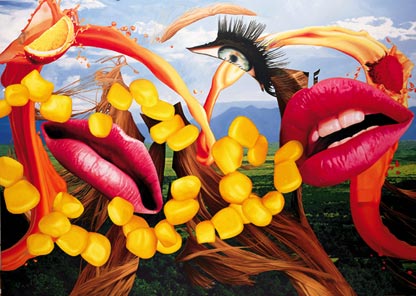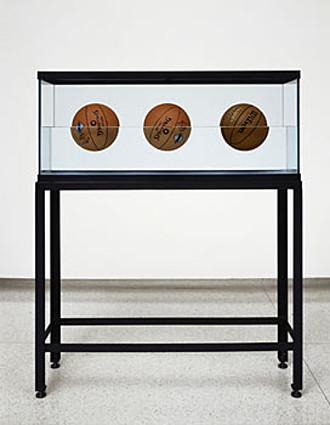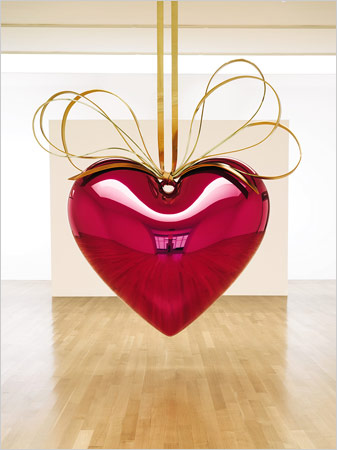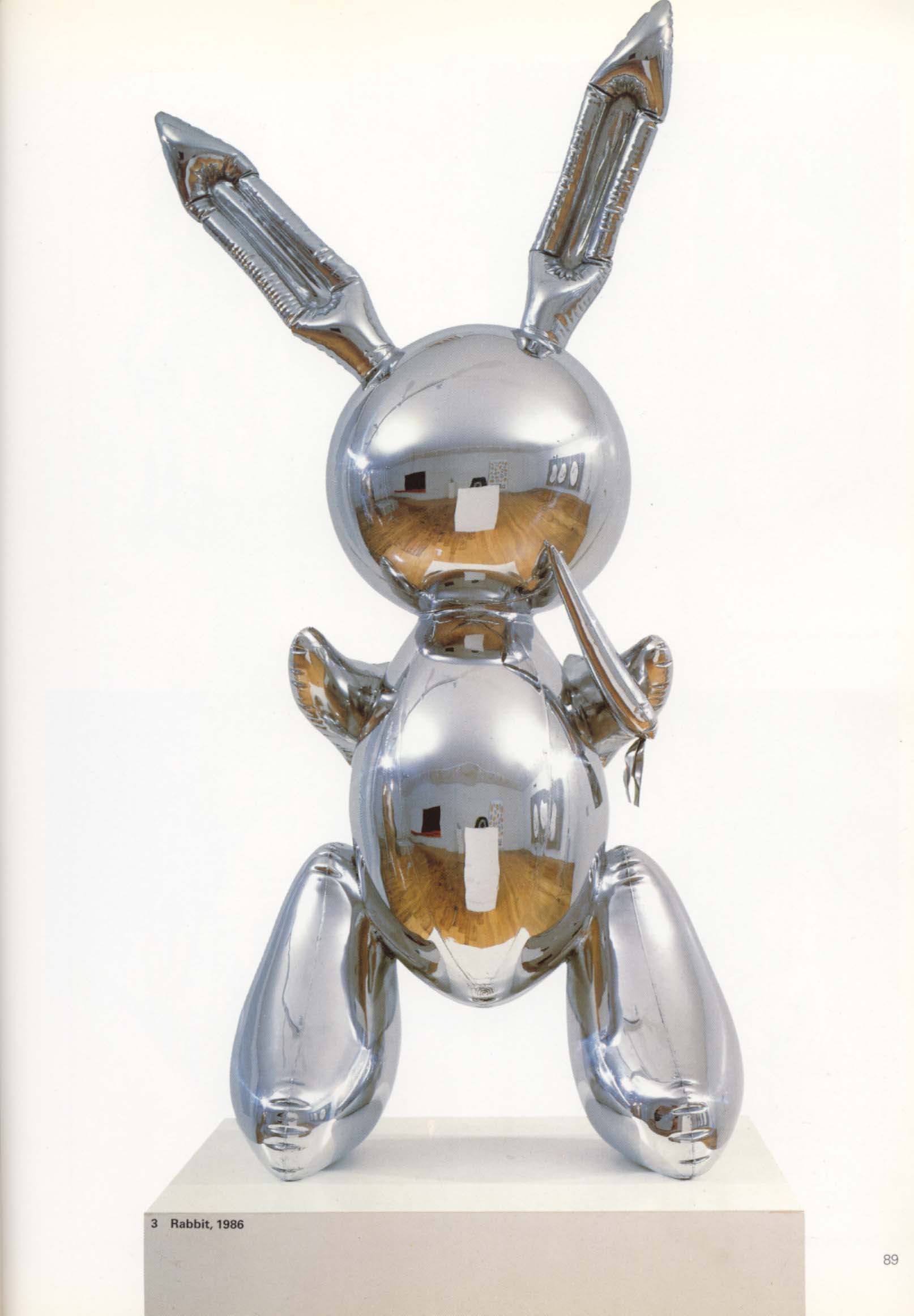
















now i assume most if not everyone who reads this is familiar with Jeff Koons. BUT
if you are not, just as i did with Anish Kapoor , here is just a little something on Jeff Koons.
Anyone can be an artist. But what does it mean to be an artist? What is art? How do we place a singular definition on such a broad controversial subject? Art can be seen as this, the actualization of an idea or feeling into the boundaries of the senses so that people may perceive that given idea or feeling of the artist. In this sense, all one really needs to truly be an artist is an idea, and a way to express that idea, a method of which the idea can be transferred from electrical signals in the brain to any medium that the human senses can perceive. Now one may argue that this definition of art and the artist is too broad, and we must limit the label and apply it to those who have the classical skills necessary for being called an artist. People such as this could not be more wrong and need look no further than to the great contemporary artist Jeff Koons. Jeff Koons can be labeled today as the Andy Warhol of the late 20th and early 21st centuries, of the era of mass information, media, and technology. He is a man with ideas, and does everything he can to express these ideas as clearly as possible. He goes through such painful lengths to execute a thought so accurately that if he cannot do it himself, he will then employ the greatest craftsmen, physicists, or chemists in the nation to help him actualize his idea. He may be seen as unconventional and the uneducated may look upon his work as strange and laugh at the fact that it is labeled as art, but this is a common occurrence in this field when it comes to truly revolutionary work, truly genius work, something completely new and original.
In an interview with Koons in 1986 by Klaus Ottman from The Journal of Contemporary Art, Koons states that he is interested in the “morality of what it means to be an artist, with what art means to me, how it defines my life, etc. And my next concern is my actions, the responsibility of my own actions in art with regard to other artists, and then to a wider range of the art audience, such as critics, museum people, collectors, etc. Art to me is a humanitarian act, and I be-lieve that there is a responsibility that art should somehow be able to affect mankind, to make the word a better place (this is not a cliche!).” In this statement we can see that Koons has somewhat of a very traditional viewpoint on what it means to be an artist, similar to the Neo-Platonic humanist thinkers of the Renaissance in Florence. Their art, their ideas, were those of harmony and unity for the better of all man, and they would express this through their paintings or sculptures or architecture. Koons uses almost a type of reverse psychology to express his message to the masses. He mocks contemporary thought and the media. He uses the media directly against itself, mocking ads from magazines, the glorification of sports stars and the pedal stool we place material objects over personal relationships. All these themes are seen in his Prenew, The New, and Equilibrium series. He takes everyday objects, such as vacuum cleaners, basketballs, snorkels (maybe not EVERYday), posters; and he finds their souls. He finds their souls and then emphasizes them, whether that is by bronzing them so they may forever exist, or making them as icons, preserving them in boxes with lights, or exaggerating the physics of objects, placing them in tubs of water. In the same interview with Ottman he speaks of this idea of a soul within the object and what it means to preserve that when creating his sculptures or assemblages. “When I’m working with an object I always have to give the great-est consideration not to alter the object physically or even psychologically. I try to reveal a certain as-pect of the object’s personality. To give you an example: if you place a shy person in a large crowd, his shyness will be revealed and enhanced. I work with the object in a very similar manner. I’m placing the object in a context or material that will enhance a specific personality trait within the object. The soul of the object must be maintained to have confidence in the arena.”
Koons tries to express the fact that every individual is created perfectly. In an interview for the Museum of Contemporary Art Chicago, he states that he hopes his pieces make their viewers realize the potential within them to create perfect things; perfect things from perfect beings. That is what his sculptures and paintings are, perfect. “His works, with their seductive surfaces and flawless execution, transform everyday objects and fantasies into high art.” He is armed only with ideas and shows that is all you need to be a great artist. He glorifies the perfection of man and the perfection of himself, again another similarity to the Florentines of the 16th century, “man is the measure of all things.” In his Made in Heaven series, he idolizes himself and his wife, creating glass sculptures of themselves in various sexual positions and busts of marble, similar to those of the ancient Greeks. His most famous and recognizable works, his “inflatables” seem impossible and unreal. The perfection in craft, and scale of the pieces make the viewer wonder with fascination how such an object was ever created. The artist’s hands have been completely removed and the perfect objects seem to be created by some other force than man, be it by mechanical means or perhaps supernatural. The perfection of his sculptures can be compared to that of Michelangelo’s Pieta or David. The major difference though between the two great men is that Koons has no talent, only ideas.
Koons’ neo-pop-art creates a relationship with the viewer the same way a television commercial or magazine ad would. I have witnessed several of his pieces of the Broad Contemporary wing of the LACMA. I must say I viewed his works with both awe and skepticism. I was floored by his oil paintings that look as if they have been created with digital perfection, and dumbfounded by his vacuum assemblages or his porcelain sculpture of Michael Jackson and Bubbles. After further investigation, and reading into the artist himself, I see the true genius in his work, and the undeniable proof that anyone with an idea can be an artist, it is just a matter of getting the idea out.
Works Cited:
www.jeffkoons.com
“Past Exhibitions”, Museum of Contemporary Art Chicago, Article and Video Interview, September 2008, http://www.mcachicago.org/exhibitions/exh_detail.php?id=178, http://www.mcachicago.org/media_player/index_vid.php?id=2
Klaus Ottman, Journal of Contemporary Art, Interview with Jeff Koons, New York City, October 1986, http://www.jca-online.com/koons.html
-DLR-
No comments:
Post a Comment